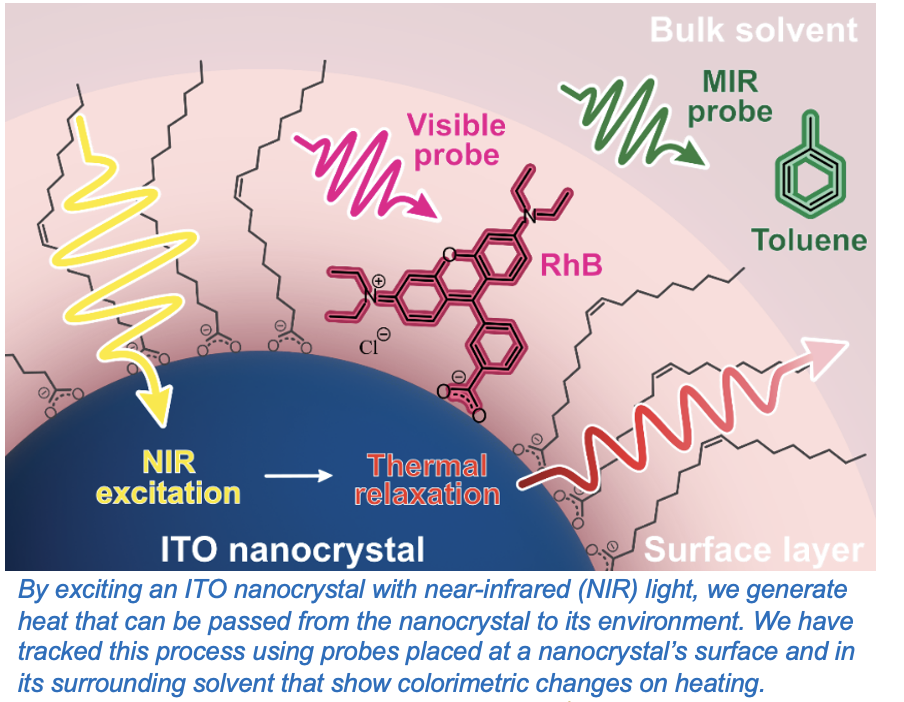 What Has Been Achieved: Metal Oxide nanocrystals that incorporate dopants (impurities) can display intense absorption bands known as localized surface plasmon resonances (LSPRs) that can transduce light into heat. Using a series of time-resolved measurements with femtosecond resolution together with a theoretical heat transfer model, we have quantified timescales over which tin-doped indium oxide (ITO) nanocrystals heat their environment following light absorption.
What Has Been Achieved: Metal Oxide nanocrystals that incorporate dopants (impurities) can display intense absorption bands known as localized surface plasmon resonances (LSPRs) that can transduce light into heat. Using a series of time-resolved measurements with femtosecond resolution together with a theoretical heat transfer model, we have quantified timescales over which tin-doped indium oxide (ITO) nanocrystals heat their environment following light absorption.
Importance of Achievement: We find heat transfer to molecules bound to the surface of ITO nanocrystals occurs rapidly, over tens of picoseconds, while heat transfer from these molecules to a surrounding solvent is slower, occurring over a few nanoseconds. This difference in timescales allows molecules at a nanocrystal’s surface to be heated significantly by light, reaching temperatures of a few hundred Kelvin above room temperature under appropriate conditions.
Relationship of Achievement to IRG: In prior work, we have established that ITO nanocrystal gels with unique optical properties can be formed by cross-linking nanocrystals to one another via thermally reversible links. By heating nanocrystals in these gels using light, we can reconfigure the gel’s structure and thereby reshape its optical and physical properties.